Most probably you may have heard the name “Firefox” as a web browser. But ever wondered from whom this name was inspired? The real firefox is non-other than the Red Panda. Although it is being called a “panda”, it is only slightly larger than a domestic cat. Red Pandas have been called many nicknames such as the lesser bear, the red cat-bear, the red bear-cat, the real/true bear, and the firefox. We celebrate September 18th as International Red Panda Day aiming to educate the world, secure and restore their habitats, and raise awareness on these adorable species and their global conservation.
Is it a Bear, a Panda, or a Raccoon?
The taxonomy of Red Panda has been controversial and debatable. At first, due to morphological similarities, it was considered a member of the raccoon family, Procyonidae. Later it was included in the bear family, Ursidae based on similarities in ecological and morphological characters. Finally, biologists assigned them to an independent family, Ailuridae where Red Panda is the sole member. Red Pandas earned the title, “the original / the only / the true panda” because biologists first described and classified them 50 years before giant pandas. There are 2 subspecies of Red Pandas as; Himalayan Red Panda, Ailurus fulgens fulgens, and Chinese Red Panda, Ailurus fulgens styani.

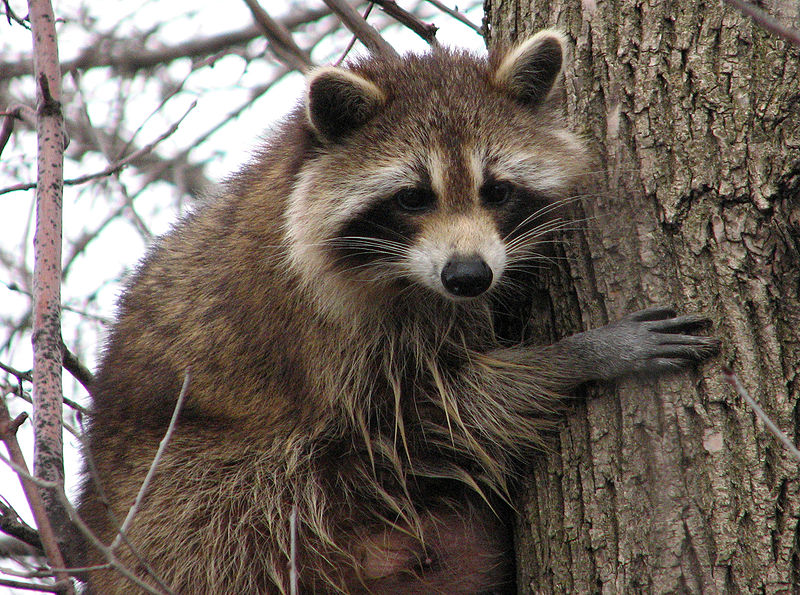
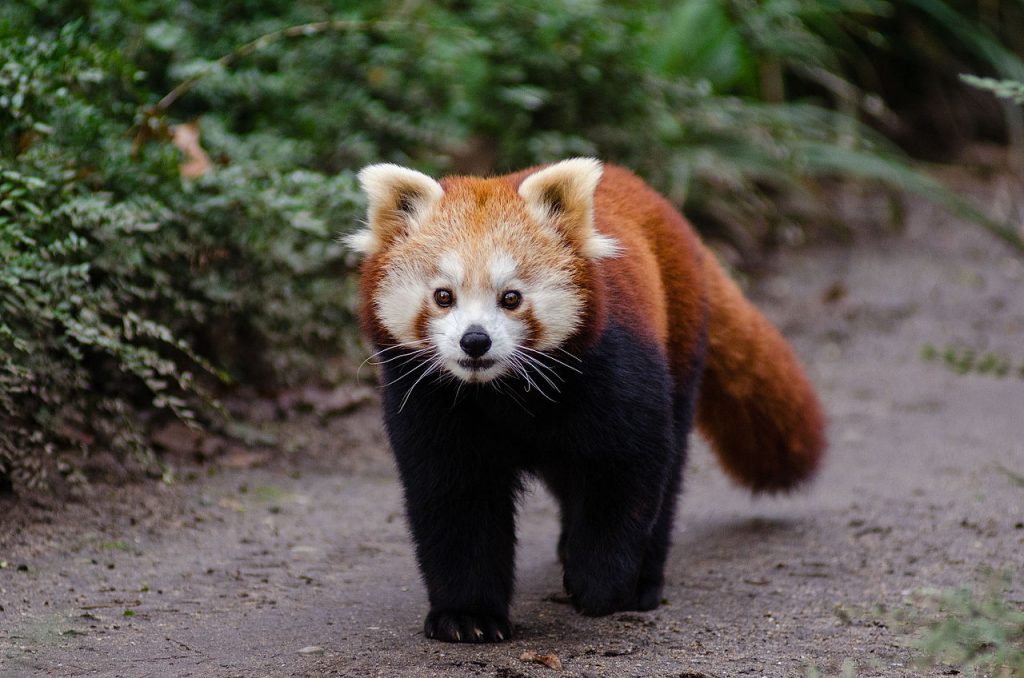
Characteristics of Red Panda
Red Panda possesses a unique reddish-brown thick fur coat with blackish fur on its underneath belly and limb regions. The coloration of its fur coat blends well with reddish-brown moss and white lichen that cover the canopy of fir trees in its habitats facilitating camouflage that protects them from predation. A long, bushy tail with alternative transverse rings protects against cold and harsh conditions. Also, it assists to maintain balance when moving along tree branches and rock edges.
The round face comprises reddish-brown ‘tear markings’ that extend from the eyes to the corner of the mouth. It is believed that these markings aid them to keep their eyes out of sunlight. Short black snout, pointed upright ears and blackish eyes are other highlighted facial features. Considering an adult Red Panda, length from head to body ranges between 50 – 65 cm, length of tail from 30 – 50 cm, and weight from 3 – 6.2 kg. A unique and common feature shared by both the Red Panda and the Giant Panda is the pseudo–thumb as both are predominantly bamboo feeders. This is a modified wrist bone that is useful in grabbing bamboo stems and tree branches.
Red Panda Habitats
Red Pandas reside in temperate mountain forests of Himalayas, India, Nepal, Tibet, and Southwestern China where bamboo trees, deciduous, and conifer forests are densely populated. As the name states, Himalayan Red Pandas are found in higher altitudes of India, Tibet, and Nepal. Chinese Red Pandas are found predominantly in China and Myanmar.
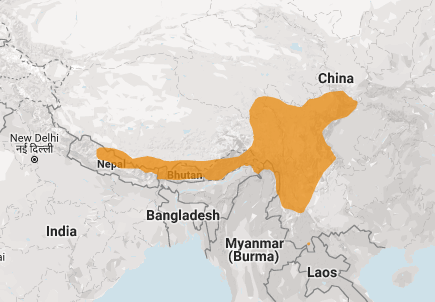
Behavior
Red pandas are skillful acrobats as they are mainly arboreal. Generally, they are very shy, quiet, and solitary animals except during mating season. Vocalizations like twittering, squealing, whistling, tweeting are their means of communication. They are considered nocturnal animals as they are most active in dawn and dusk. Therefore, during the daytime, they are very lethargic and rest on trees to lower their metabolic rate to conserve energy due to their diet with much lower nutrition. They also exhibit territorial marking using anal glands and urine. A cone-like structure that is located on the underside of its tongue aids in detecting the odor/scent of these territorial markings.
Diet of Red Panda
Although classified as carnivores, to be precise they are herbivorous – carnivores. A large portion of their diet comprises bamboo leaves as it is difficult for them to digest cellulose. Also, they feed on fruits, insects, grass, mushrooms, roots, lichens, eggs, flowers, small mammals, birds, and berries.
Breeding
In the wild, adults interact actively during the mating season only. Female panda starts to build a nest, before the birth of offspring, in the tree roots or hollow stumps. Mother constantly groom and nurse her cubs. Mother panda can recognize each cub via their distinct smell. Cubs can open their eyes at the age of 18 days and gradually grow to become sexually mature around 18 months of age.
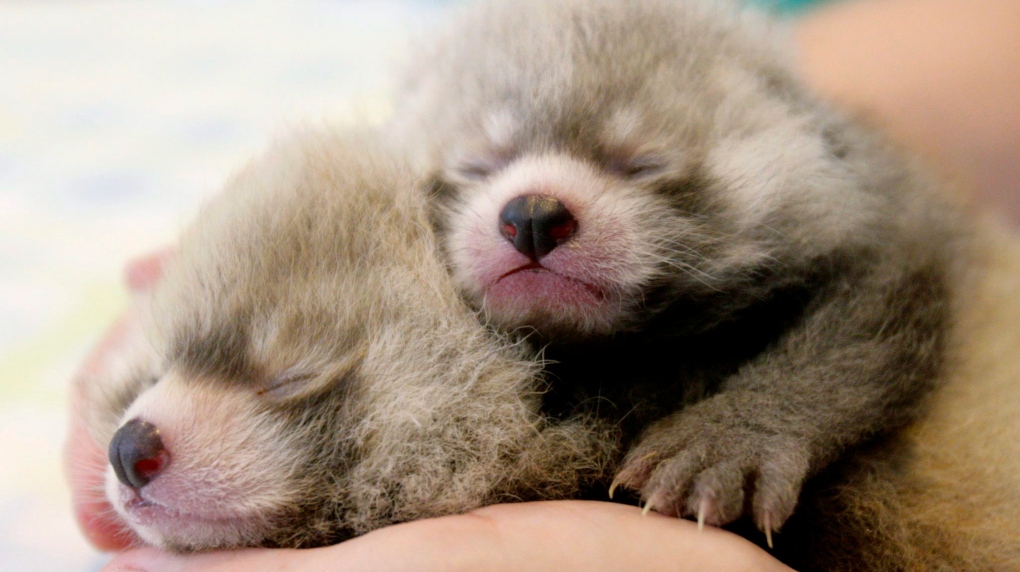
Threats and Conservation
According to the IUCN Red List, the conservational status of Red Panda is mentioned as an endangered species. Deforestation that leads to habitat loss or fragmentation, poaching for their skin, illegal trade, and inbreeding depression are the grounds for the vanishing of these creatures.
Countries like Myanmar, China, and India have named protected areas for their populations. These niches are areas with dense bamboo trees. Zoological gardens contribute by restoration of the Red Panda population by captive breeding programs so that they can be safely bred and released to the wild successfully. There are successful programs out there that restore degraded forests (habitat) by planting vegetation and establishing food and water resources to avoid competition. In Nepal, waterholes for wildlife, particularly for Red Panda habitats are created due to water scarcity in these regions. Education is the key to success. The community that deserves education on the conservation of these animals, is the local community that lives with those animals. Raising awareness and introducing alternatives to reduce dependency on Red Pandas’ niches for timbering and livestock feeding, which degrades their limited resources, assist in boosting their population growth positively.
Despite the challenges and plight of their lives, Red Pandas are not strangers to popular culture. Their distinct and eye-catching look has made them into inspirations of animation and cartoon characters such as the Kungfu teacher, Master Shifu from “Kungfu Panda”, and Pabu from “The Legend of Korra”.


Written By:
S.T. Ravini Upeka De Silva.
2nd Year Undergraduate,
Faculty of Science,
University of Colombo.
References:
- Red Panda Facts. (2021). Retrieved 13 September 2021, from https://redpandanetwork.org/Red-Panda-Facts
- Red panda. (2021). Retrieved 13 September 2021, from https://nationalzoo.si.edu/animals/red-panda
- Is a Red Panda a Bear? And More Red Panda Facts. (2021). Retrieved 13 September 2021, from https://nationalzoo.si.edu/animals/news/red-panda-bear-and-more-red-panda-facts
- red panda | Characteristics, Habitat, & Facts. (2021). Retrieved 13 September 2021, from https://www.britannica.com/animal/red-panda
- 7 Things You Didn’t Know About Red Pandas. (2021). Retrieved 13 September 2021, from https://blogs.scientificamerican.com/thoughtful-animal/7-things-you-didne28099t-know-about-red-pandas/
- Glatston, A., Wei, F., Than Zaw (IUCN SSC Cat SG / Wildlife Conservation Society (WCS), M., & Sherpa, A. (2021). IUCN Red List of Threatened Species: Ailurus fulgens. Retrieved 13 September 2021, from https://www.iucnredlist.org/species/714/110023718
- Red Panda Network. (2021). Retrieved 13 September 2021, from https://redpandanetwork.org/
- Red Panda | National Geographic. (2021). Retrieved 13 September 2021, from https://www.nationalgeographic.com/animals/mammals/facts/red-panda
- Red Panda | Species | WWF. (2021). Retrieved 13 September 2021, from https://www.worldwildlife.org/species/red-panda
Image Courtesy:
- Title Image: https://bit.ly/3Ewh7BW
- 1st Content Image: https://bit.ly/3AfXefY
- 2nd Content Image: https://bit.ly/3nM6ips
- 3rd Content Image: https://bit.ly/3tNf3k2
- 4th Content Image: https://bit.ly/3zjhBHX
- 5th Content Image: https://bit.ly/3tQx5Sq
- 6th Content Image: https://bit.ly/2VUKXig
- 7th Content Image: https://bit.ly/3Am9MCv

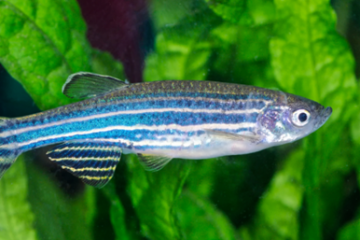

0 Comments